Fluid Panel State
Andrea Zittel’s color block installations take over Andrea Rosen Gallery

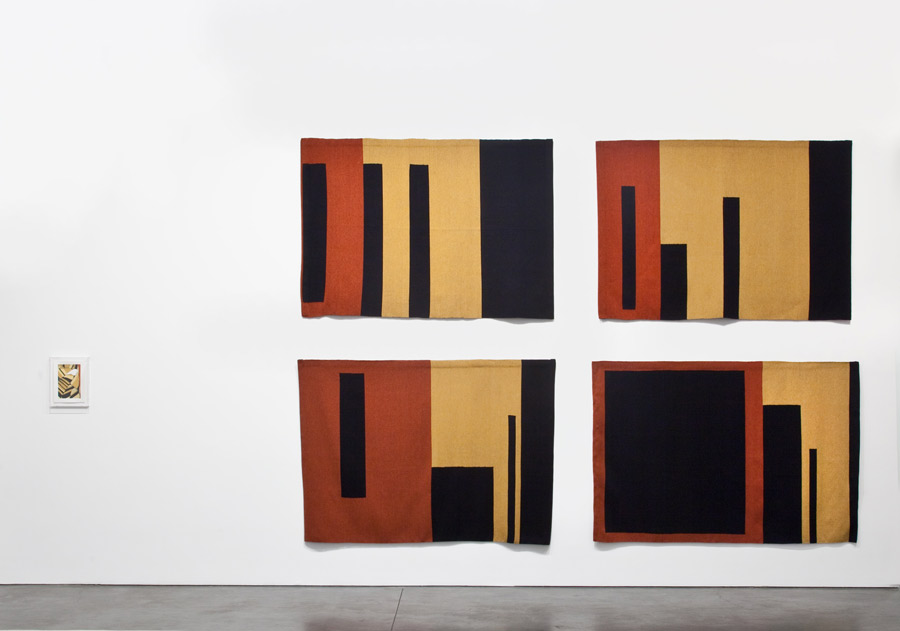
“I have one of these at home covered in cat hair,” Andrea Zittel says, indicating a large, color-blocked woven panel hanging in “Fluid Panel State,” her 10th solo show at Andrea Rosen Gallery. The panel in question, “A-Z Cover Series 2 (Rust and Gold Geometric),” is one of dozens of wall hangings in the exhibition, which also includes a PowerPoint, woven clothing, smaller watercolor and gouache color studies, enamel and plywood billboards and the 26-foot-long “Installation of Nine ‘A-Z Cover Series 1 (Gold and Black Stripes),'” which stretches out in accordion-like folds across an entire wall.
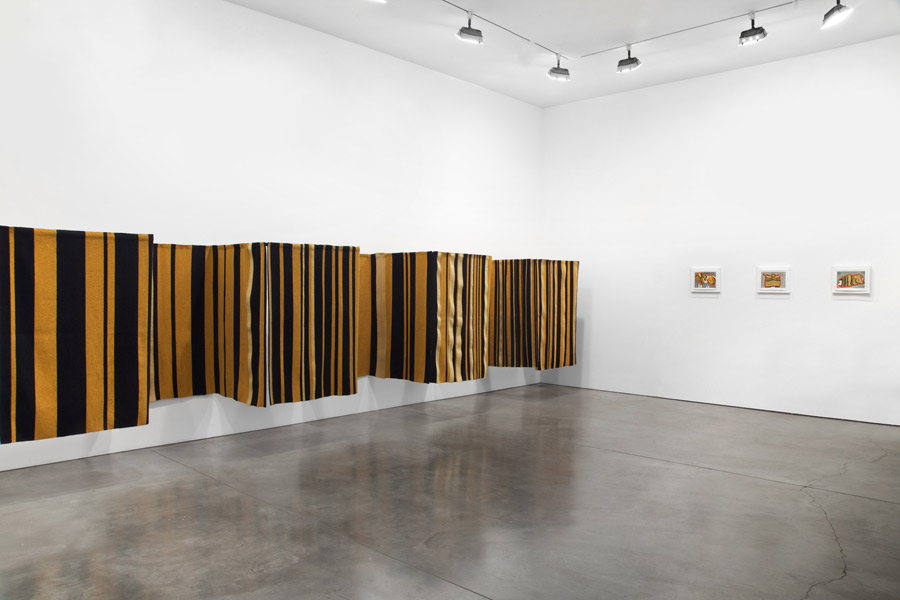
The floor of the first room of the newly renovated gallery is occupied by “A-Z Carpet Furniture: Cabin,” a 12×16-foot plush nylon carpet, a remarkable piece designed as a woven layout of a small, one-room house. A black rectangle denotes the kitchen counter, for example, and a red square inset, two smaller black squares and two turquoise squares represent the dining table, placemats and chairs. There’s another rectangle for the dresser, one for a bedroom chair and one for the bed.
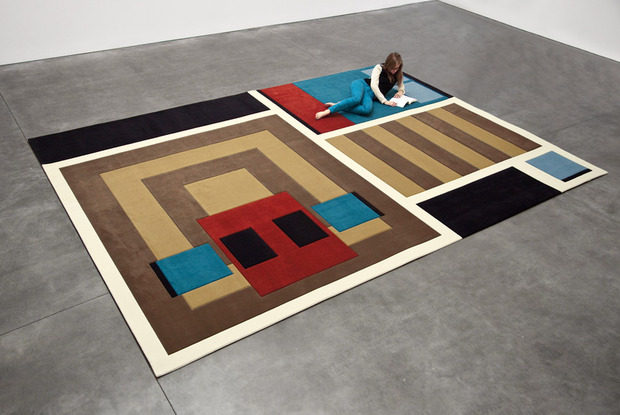
It should surprise no one familiar with Zittel—famous not only for the conceptual and craft aspects of her work, but for her rigorous dedication to integrating her work into her daily life (she still wears a seasonal uniform, currently a black and burnt orange color block shift dress)—that she lived in “Cabin” as a home within her own in Joshua Tree, California. She said the project began when it became clear that her neighbors weren’t going to sell her the tiny desert cabin of her dreams, so she wove a floor plan reflecting how she would have designed its interior.
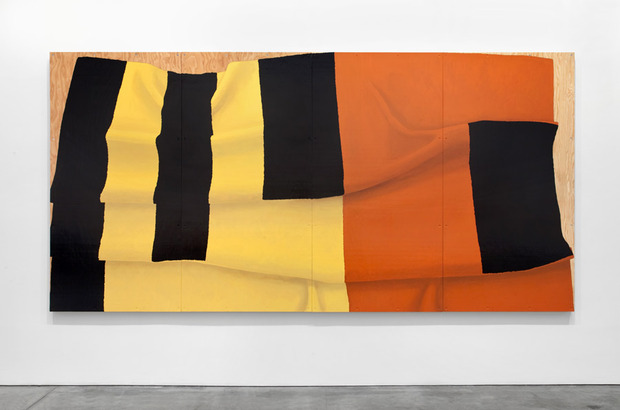
If the overarching panel theme feels somewhat loose or perhaps even a bit random, Zittel’s cheeky, Miranda July-like PowerPoint clears things up. After thoroughly defining what a panel is—a limited plane, a separation, a support, a means of shelter—she gives some examples of planes, showing images of a board, a rug, a curtain, playing cards, even a paper towel, laid out on a tabletop with care. She goes on to say how the fluid panel is the most difficult type of panel to understand and is, therefore, the focus of her exhibition.
Unlike the other clearly defined panel states, Zittel doesn’t elaborate on what “fluid panel” might mean, and is understandably hesitant to provide an easy, concrete definition of the mysterious phrase.
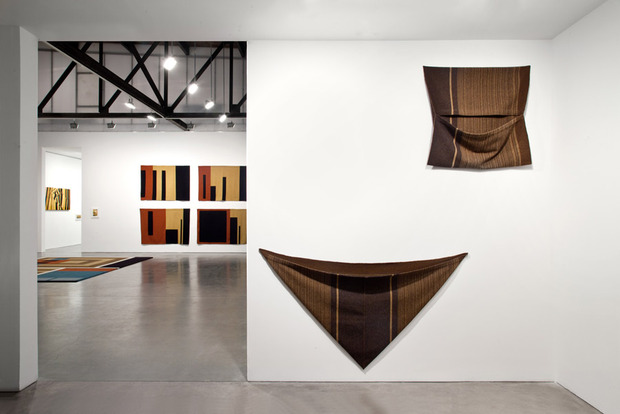
Her ideas about the fluid panel are, however, made abundantly clear in the boldly woven textiles that drape the gallery rooms. The blankets, ponchos and rugs are elevated beyond their common functionalities by the care with which Zittel approaches the craftsmanship of each piece. Materials and process are key here, and though Zittel didn’t weave these herself (it takes years to master the art), she sourced the very best weavers working on looms over 60 inches wide from all over the country.
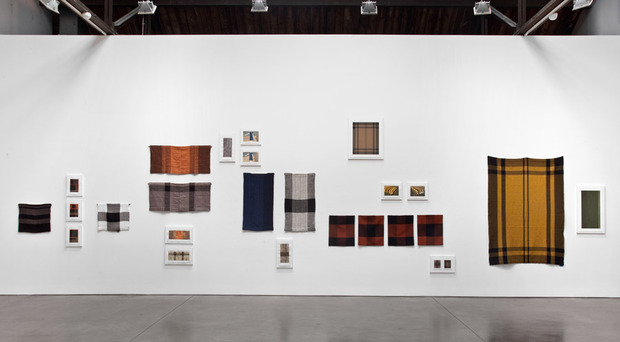
Installation of Nine, for example, gets its striped pattern from the time it took to weave each section. When the weaver began a new section, they used a different color wool yarn in various shades of gold and black depending on the time of day and the quality of the light—so what seems at first like a nice-looking blanket is really a kind of calendar or daily record of the weaving process itself. For pieces that might find a home in the decorative arts, none of Zittel’s are purely decorative, but are designed for a specific function or with a rigor that becomes a crucial part of the finished work.
“Andrea Zittel: Fluid Panel State” runs through 27 October 2012 at Andrea Rosen Gallery.












